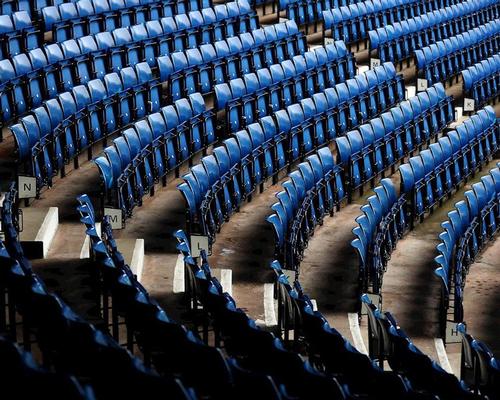09 Apr 2018
Government turns down plans for safe standing in English top flight football
BY Tom Walker

Premier League football club West Bromwich Albion (WBA) has had its proposal to establish a safe standing area at The Hawthorns stadium rejected by the government.
The pilot scheme would have seen around 3,500 seats being converted to rail seats – a system which allows seats to be locked in an upright position, creating a standing area.
The club was hoping to install the rail seating – which would have been available for both home and away areas – in time for the 2018-19 season.
Sports minister Tracey Crouch, however, has ruled out the idea – confirming there are no plans to change the all-seater policy at football stadia.
The decision was described as both "surprising" and "disappointing" by WBA's director of operations Mark Miles, who has driven the initiative to get safe standing installed at The Hawthorns.
"It will certainly be disappointing for many, many supporters I have spoken to who were in favour of what we were proposing," Miles said. "It has also been a regular topic of discussion at our Albion Assembly meetings where the members' support has been clear.
"I think the minister has taken a short-sighted view and is preventing the club from creating a safer environment for supporters. The all-seater policy was developed over 25 years ago and football is a very different place now.
"The system we proposed is well-tested across Europe and has also worked successfully at Celtic, who are governed by different legislation than in England and Wales.
"We were prepared to run a pilot which would enable the club to gather data and feedback to further inform us in the issue of crowd safety.
"But I have become convinced that rail-seating would enhance safety. The club is extremely disappointed with this decision."
Miles added that the club has written back to the Sports Grounds Safety Authority urging a review.
Standing areas disappeared from major English stadiums in the 1990s as a result of the Taylor Report, which was produced in the aftermath of the 1989 Hillsborough disaster – a human crush during an FA Cup semi-final that caused 96 fatalities and 766 injuries.
The Taylor Report put forward 76 recommendations, including that all major stadiums should become all-seater venues and all spectators should be allocated a seat.
Standing is still permitted in the lower leagues, where capacities tend to be smaller, but clubs in the top two divisions – the English Premier League and the Championship – are required to play their games at all-seater stadiums.
There has, however, been a growing groundswell of support for the return of standing areas in recent years.
Fans, clubs, stadium operators and even safety authorities have voiced views that there could be a place for properly-designed, purpose-built ‘safe standing’ areas within modern football stadiums.
One of the seating solutions which offers the option of safe standing is the rail seating model which WBA was keen to install.
An example of how rail seating works can be found in the Scottish Premiership, where Celtic FC became the first club in the UK to install rail seating at an all-seater stadium.
In 2016, the club installed nearly 3,000 rail seats – from UK supplier Ferco – at its Celtic Park home. As well as eradicating the issue of persistent standing, the safe standing zone has been credited with improving the stadium’s atmosphere.
Close Window